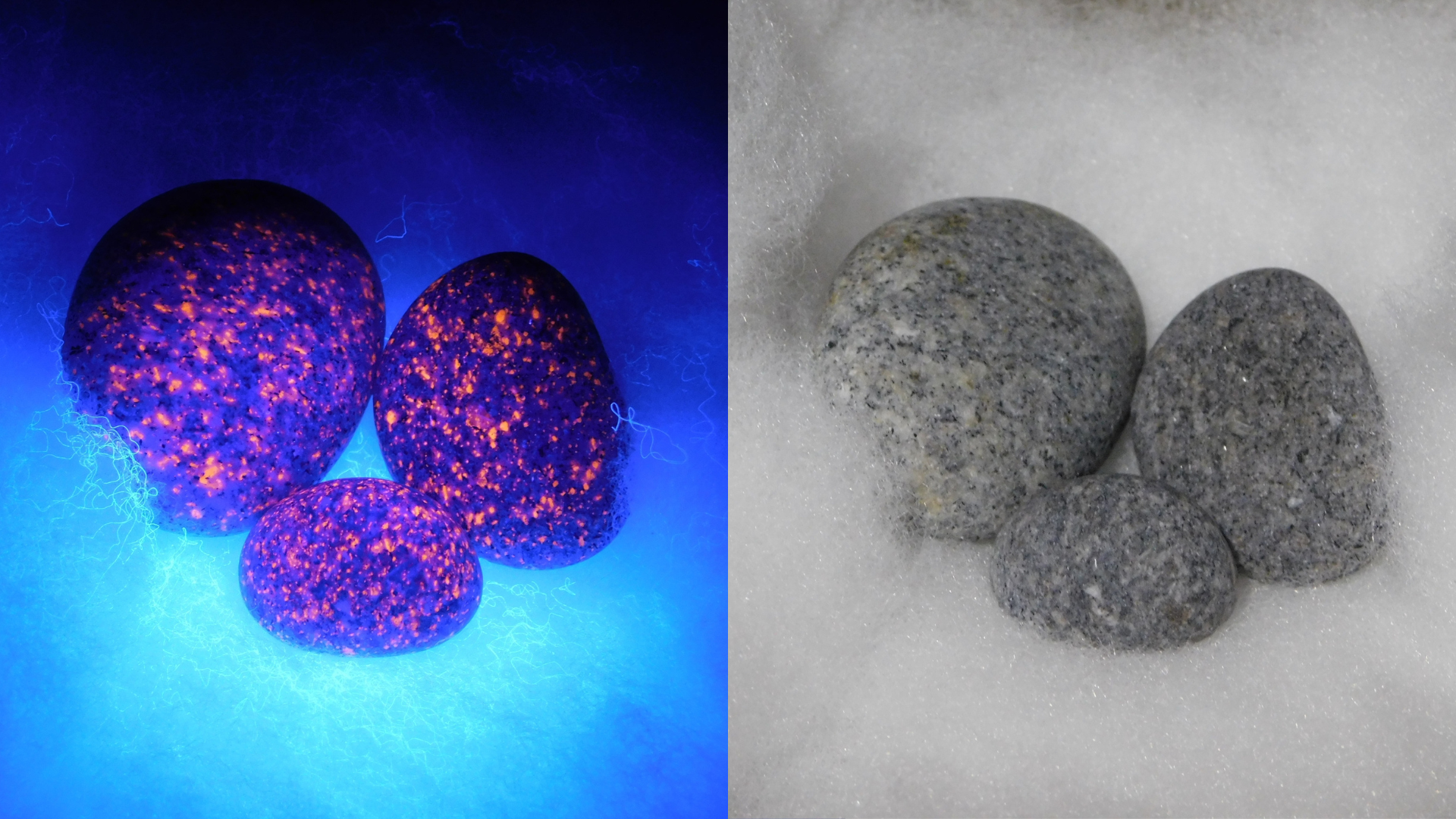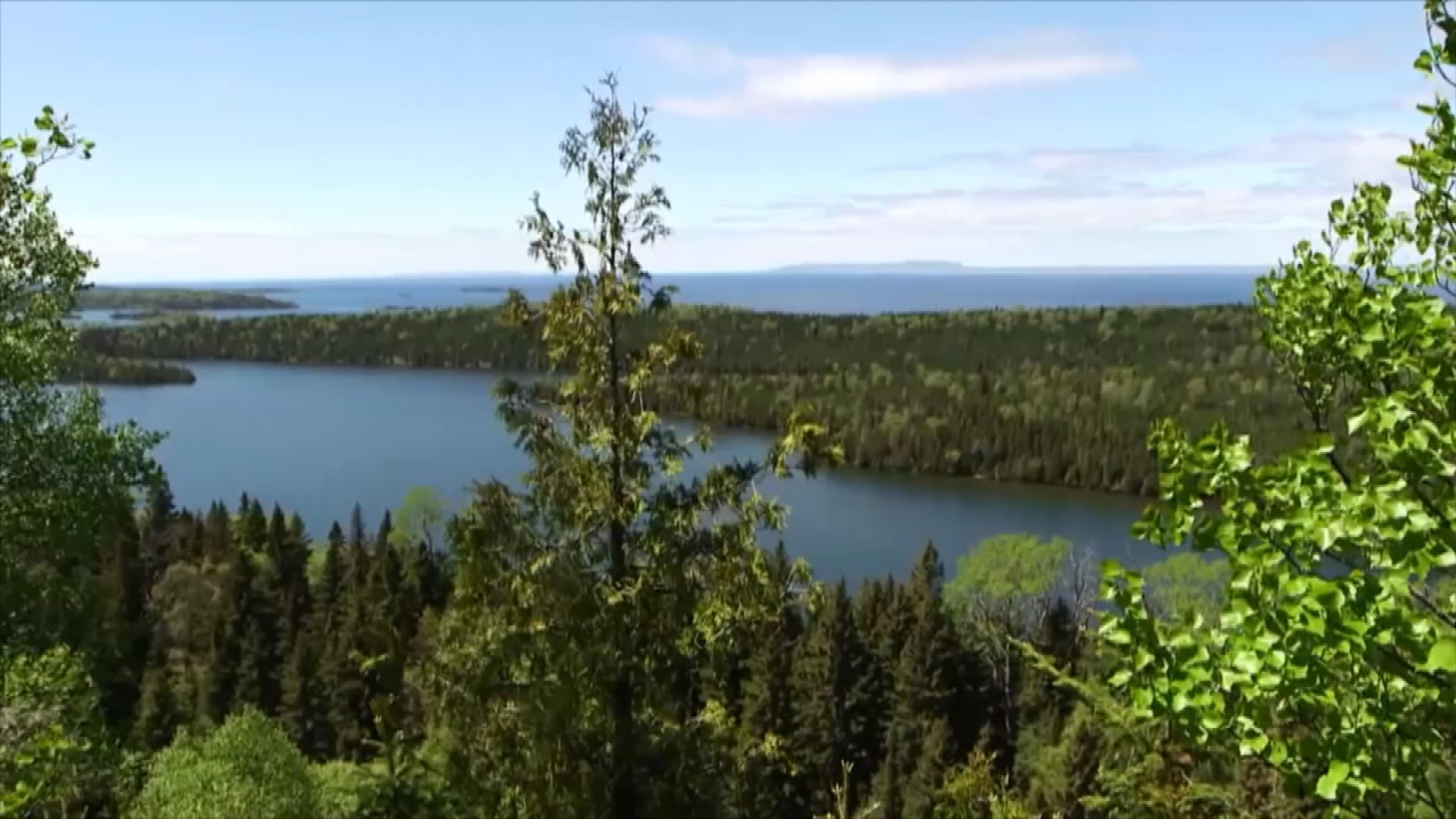What are Yooperlites?
These gray rocks don’t look like much until you shine UV light on them. Suddenly you’ll see the fluorescent sodalite in them light up orange and yellow. Not all sodalite glows, but Yooperlites are polluted (or “doped”) with disulfide, a type of sulfur. The fluorescence isn’t like glow-in-the-dark Halloween decorations though. It only lasts as long as you shine a blacklight on it.
Who discovered them?
Sodalite is a fairly common mineral around the world, but what makes Yooperlites so special is that they were only discovered in Michigan in 2017! Erik Rintamaki, the first person to identify fluorescent sodalite in Michigan, combined the nickname “Yooper” (someone from the U.P.) and “sodalite” to create the name. He even has the name trademarked.
Erik talked with Traverse Magazine about the discovery that changed his life.
Where do they come from?
Fluorescent sodalite syenite, also known as “Glowdalite” for its fluorescence, formed in Michigan about 1.1 billion years ago. It was during a particularly violent geological period when North America seemed like it might split in two. All that tectonic shifting caused huge volcanic eruptions, but one large body of magma in what’s now Ontario, Canada never quite made it to the surface. That magma cooled and became syenite granite with sodalite impurities in it.
Just like Petoskey and Charlevoix stones, these rocks were eventually scooped up by glaciers during the Ice Age and deposited on the shores of the Great Lakes.
Where can you find them?
Because they came from Ontario, most Yooperlites wound up on the shores of Lake Superior, true to their name. You can find them elsewhere in the Upper and Lower peninsulas, but the best places seem to be Chippewa and Luce counties and the Keweenaw Peninsula.
Tips for finding them
It’s pretty much impossible to tell the difference between Yooperlites and other granite you find at the beach during the day. You’ll want to go out at night with a good blacklight. Look for one that has 365nm wavelength (easy way to remember – it’s the number of days in a year).
Experts say you should wear sunglasses (yes, even at night) or safety glasses with UV protection. UV light is still bad for your eyes, even if you’re not staring directly at the sun.
Make sure you’re allowed to be on the beach at night and know the rules and regulations for rock collecting in Michigan.





